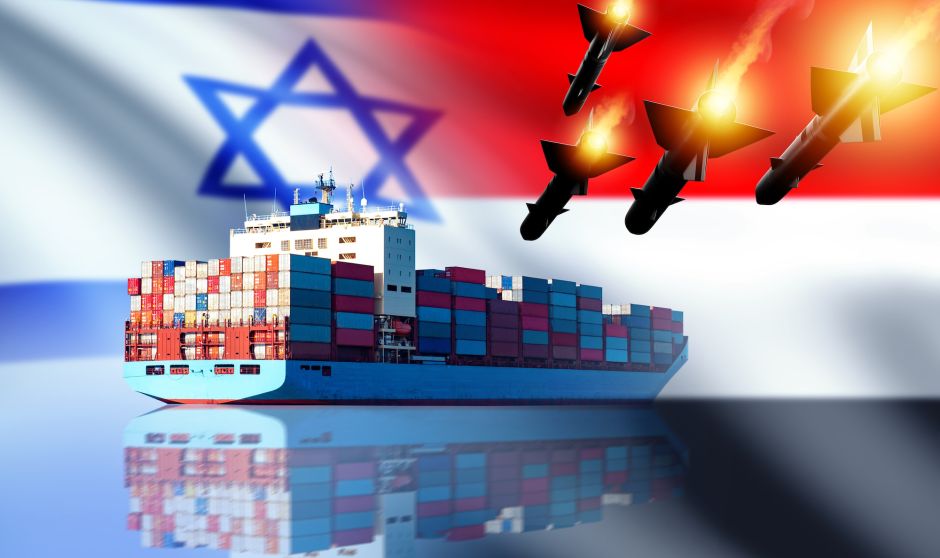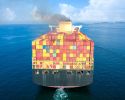The disruptions in container shipping will continue

Covid was unforeseeable, but the war in Ukraine, the unrest in the Red Sea, and the drought at the Panama Canal are entirely in line with the geopolitical changes that were underway even before the pandemic. Disruptions in the supply chains are something we will have to live with for a long time, according to researchers behind a new report on operational disruptions in container shipping funded by the Swedish Transport Administration and Lighthouse.
Major train delays, long car queues in snowstorms, and airplanes not taking off often make it to the front pages of newspapers. It's not surprising. We all know how frustrating it is to wait instead of being able to go or come home. However, no news reporter cares about a delayed ship with bananas and other groceries. After all, the shelves in the stores are well-stocked anyway. Even during the pandemic, most Swedish stores had everything, even though we did our best to empty the shelves of toilet paper. But that was more due to peculiar human psychology than a shortage of paper.
"In the acute phase at the beginning of the pandemic, Swedish shipping was greatly affected, but it was mostly about personnel problems. Many, of course, had difficulty getting to and from work due to the risk of infection, but above all, many were laid off or fired when passenger traffic was hit hard and routes were closed," says Ceren Altuntas Vural, a researcher at Chalmers who, together with colleagues from the University of Gothenburg and RISE, studied the effects of the pandemic on container shipping in a three-year project.
It wasn't until a few months into the pandemic that problems in container shipping began to be noticed. In China, where the pandemic hit first, factories had shut down in early 2020, and there were barely any goods to send to the US and Europe. When the pandemic then hit the rest of the world, demand also plummeted drastically, and shipping companies responded by canceling departures and removing all extra capacity. It was a misjudgment. After the world's governments stimulated the economy, Americans' and Europeans' demand for consumer goods from Asia increased rapidly – the money couldn't be used for traveling or eating out, after all.
"We have never seen such demand before. Recoveries usually happen gradually in the market, but now it happened immediately."
The price of container freight from Asia rose. At its worst, the rates were about ten times higher than in the years before the pandemic (they have now returned to that level or even below), but many major ports had problems with their calls, becoming huge bottlenecks. In San Pedro Bay off the ports of Los Angeles and Long Beach, ships lay waiting for weeks, and major retail chains like IKEA, Walmart, and Home Depot chartered container ships to get their goods into the US via smaller ports.
Since the outbreak of the pandemic, various operational disruptions in container shipping have become commonplace in the international media. In March 2021, the ship Ever Given ran aground in the Suez Canal, in February 2022, Russia invaded Ukraine, and this year, Houthi rebels' attacks on cargo ships in the Red Sea redirected container traffic around the Horn of Africa instead of through the Suez Canal. Meanwhile, extreme drought has halted passages through the Panama Canal.
"There will be more major disruptions in container shipping; that's one thing we have learned during the project work. There are many bottlenecks in the system. During Covid, the virus was a bottleneck, but the bottlenecks now are primarily climate change and the geopolitical crisis. World trade was characterized by peace for a long time, but just before the pandemic, we saw how a trade war between the US and China began to escalate, and now we clearly see how drought and war create disruptions," says Ceren Altuntas Vural.
So how should this be handled? According to the researchers, there is no silver bullet, but rather a keyword – flexibility. Shipping companies must be prepared to find alternative routes and acquire the skills to do so. In Panama, for example, Maersk reloads its containers onto trains and transports them by road the scant eight miles through the country.
"Shipping companies can sail, but now they have to learn to combine it with land transport. They must, in a completely different way than before, gain control over the entire supply chain and the ability to quickly choose alternative solutions where necessary. It will be more expensive, but it is necessary. Shipping must function like a pipeline, otherwise, everything will come to a halt," says Ceren Altuntas Vural.
The report "Disruptions in international container shipping during the Covid-19 pandemic from a Swedish perspective" has been authored by Ceren Altuntas Vural (Chalmers), Marta Gonzalez-Aregall (University of Gothenburg), Johan Woxenius (University of Gothenburg), Sara Rogerson (RISE Maritime), and Martin Svanberg (RISE Maritime).
-
 2025 – ett år präglat av osäkerhet
2025 – ett år präglat av osäkerhet -
 "Ögon på plats” tidigt kan rädda liv
"Ögon på plats” tidigt kan rädda liv -
 Antifoulingfärger testas bäst i strömmande vatten
Antifoulingfärger testas bäst i strömmande vatten -
 Så kan biogasen få en betydande roll för sjöfartens omställning
Så kan biogasen få en betydande roll för sjöfartens omställning -
 Från motorbåt till militärfartyg – traineeprogrammet gav Isak nycklarna till sjöfartsbranschen
Från motorbåt till militärfartyg – traineeprogrammet gav Isak nycklarna till sjöfartsbranschen -
 DNV: Metanol är ett moget alternativt bränsle
DNV: Metanol är ett moget alternativt bränsle -
 Se Hållbar sjöfarts uppsamlingsheat
Se Hållbar sjöfarts uppsamlingsheat -
 NextWave – en podd som ska locka unga
NextWave – en podd som ska locka unga -
 Ny studie: Eldrivna pendelbåtar kan effektivisera Stockholms kollektivtrafik
Ny studie: Eldrivna pendelbåtar kan effektivisera Stockholms kollektivtrafik -
 Sjöfartens utsläpp ökar
Sjöfartens utsläpp ökar

